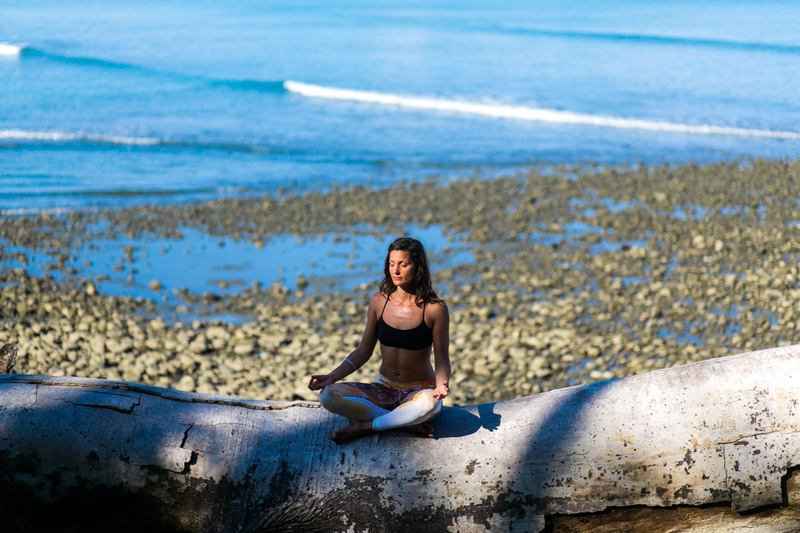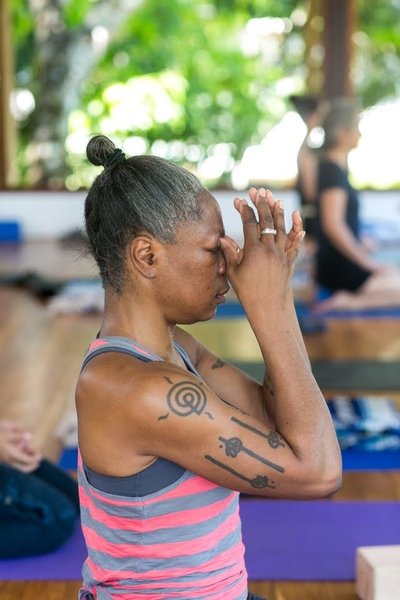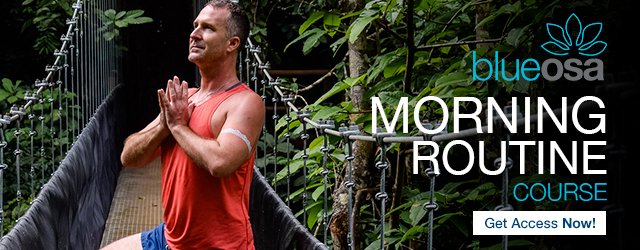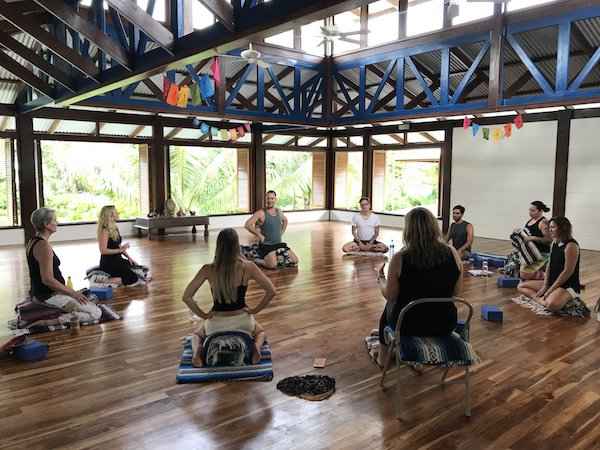
Meditation can be transformational. Simple, but powerful, it is one of the most life-enhancing skills we can learn. Aside from improving our overall wellbeing, meditation training has the power to reduce stress and boost brain functioning. It trains the mind to move into a place of peace and clarity and helps us to go with the flow in everyday life.
For beginners, the thought of sitting silently with a clear mind can sometimes seem like an impossible task. However, meditation should never be a struggle. By starting with the basics and slowly developing a consistent practice, everyone can learn to meditate in an enjoyable and effective way.
Meditation From Past to Present
It’s true that meditation is more popular than ever. With celebrities, athletes, and CEOs praising meditation training and it’s positive effects, it might seem like everyone’s jumping on the bandwagon. However, meditation is far from just a trend. In existence for around 5,000 years, meditation is an ancient practice with deep roots in spirituality.
The earliest depiction of meditation was recorded in the Vedas, the ancient Hindu texts written in about 1,500 BC. Historically, meditation was largely seen as the practice of monks, priests, and other religious figures. As a result, meditation didn’t gain widespread recognition until the 1960s and ‘70s, when Hatha yoga and Transcendental Meditation enjoyed a boost in popularity. Also, ever since Jon Kabat-Zinn founded the Stress Reduction program at the University of Massachusetts in 1979, researchers have been examining meditation’s therapeutic effects.
These days, meditation is mainstream. From apps to wellness retreats, people are embracing meditation as a tool of self-improvement. Today, meditation training is used as a performance enhancer, stress-reduction method, and even as a medical intervention. It can improve our relationships and help us to recover from trauma. Although it’s a simple skill, meditation can give us an entirely different perspective on life.
The Benefits of Meditation
From increased energy to improved concentration, the benefits of meditation seem endless. Studies show that meditating regularly can have a significantly positive impact on mental health. Meditation can help to ease depression, lessen anxiety, and boost positive emotion. The benefits aren’t limited to the mind either – meditation has also been found to regulate blood pressure and improve immune function.
Out of all these impressive benefits, meditation’s most powerful effect relates to stress. We all experience stress in different ways. However, the typical physical response to a stressful situation involves a rush of adrenaline, a rise in blood pressure, and faster breathing. When faced with danger, this physical response can save our lives, hence why it’s known as “fight-or-flight”.
Yet, most of us now experience stress on a daily basis. You might find yourself tensing up in traffic or getting frustrated during a work meeting. If you don’t deal with your stress levels, you can end up existing in a constant state of tension. The good news is that stress reduction is achievable for everyone. By developing a consistent meditation practice, you’ll release harmful stress and tension from your body in an effortless way.
Meditation as a Performance-Enhancing Tool
Given that meditation reduces stress while also improving brain function, it’s no surprise that we’re embracing its performance-enhancing effects. In the workplace, meditation training is increasingly used by CEOs and busy business executives. Marc Benioff, founder and CEO of Salesforce, has said that he meditates every morning before work. According to Benioff, developing a meditation practice is something that all aspiring entrepreneurs should do.
In recent decades, sports stars and professional athletes have also turned to meditation. LeBron James famously meditates regularly and credits yoga with helping him to play at the highest level possible. George Mumford, a meditation teacher who worked with the Chicago Bulls, has said that meditation increases the chances of athletes achieving peak performance.
However, when it comes to meditation training, consistency is key. Although the long-term benefits of meditation are numerous, you’ll need to practice regularly to experience them deeply. As a beginner, you can start to enjoy the wonderful effects of meditation just by setting aside 5 –10 minutes each day.
Meditation Techniques
If you’re new to meditation, getting started is the most powerful step you’ll take. However, with the variety of meditation techniques out there, choosing one can be difficult. As a beginner, it’s often best to begin with a simple breathing technique. Then, as you progress on your meditation journey, try experimenting with other methods to find out which one you connect with the most.
Mindfulness Meditation
Originating from Buddhist teachings, mindfulness meditation involves observing your thoughts. The aim is not to focus on your thoughts, but to be aware of them as they drift in and out of your mind. By observing your thoughts and feelings in a detached way, you’ll start to notice if they exist in patterns. You might also become more aware of your tendencies to judge experiences as good or bad. With lots of mindfulness practice, an inner balance develops.
Focused Meditation
Focused meditation involves concentrating on any of the five senses. This might mean focusing on the breath or concentrating on something external, like the sound of a gong. When you notice your mind wandering, refocus by bringing your mind back to the object, sound, or breath. Start slowly though, as beginners often find it difficult to hold their focus for more than a few minutes at a time.
Mantra Meditation
Mantra meditation is sometimes easier for beginners. Used in a number of spiritual traditions, such as Hinduism and Buddhism, this technique involves the repetition of a mantra. To bring calmness and clarity to the mind, you repeat a specific sound, word, or phrase. “Om” is often used in mantra meditations, but it varies according to the spiritual tradition. The mantra can be spoken loudly or quietly and the intention is that it allows the meditator to experience a profound level of awareness.
Simple Meditation Practice for Beginners
Meditating is about showing up and being present, day after day. There’s no single meditation training technique that suits everyone. Instead, it’s about finding a technique that you connect with and building a consistent, daily practice. The following step-by-step practice is simple, but effective, making it perfect for complete beginners:
1. When setting yourself up to meditate, it’s important to make sure that you’re in a comfortable sitting position. You can either sit upright in a chair or on a cushion on the floor, depending on what feels right to you. If you choose to sit in on a chair, make sure that both of your feet are on the floor. Let your hands rest gently on your knees or in your lap.
2. Close your eyes and breathe naturally. Focus your attention on your breath, but without trying to control it. Keep your awareness on your breath as it leaves and enters your body. If you find that your attention wanders, gently bring your focus back to your breath. Don’t worry if this happens often. The more you meditate, the easier you’ll find it to hold your focus.
3. Continue focusing on your breath for as long as you like. As a beginner, it’s a good idea to start with a five-minute practice and build up from there. Eventually, you might find yourself able to meditate for 20 or 30 minutes at a time.
4. When you feel ready to end your practice, open your eyes and bring your awareness back to your surroundings. Move slowly at first, maybe stretch a little, and enjoy the feeling of calm.
This is a simple practice that you can try on your own. However, if you’re still finding it difficult to meditate, you can also check out our list of guided meditations to help kick start your practice.
Practical Tips for Meditation Training
Sit upright: Although some people like to meditate in bed, we recommend meditating in a space that is not used for sleeping. You can also try sitting upright. By sitting upright when you meditate, you’re more likely to stay alert and awake. Beginners often find that sitting upright in a chair, feet placed flat on the ground, is a great place to start. Maintain a good posture, with your back straight, neck relaxed, and your hands resting lightly on your lap.
Commit to a regular practice: Developing and sticking to a new routine takes practice and discipline. To give yourself the best chance of maintaining a meditation routine, start by deciding how much time you can commit to it. As a beginner, starting with 5–10 minutes a day is a great achievement. If that’s too much for you, try meditating a few times a week. A little meditation is better than no meditation at all, but the more you do it, the greater the benefits will be.
Choose a quiet place: Don’t worry if there’s a little background noise when you meditate. However, it’s a good idea to find a relatively quiet place, where you’ll be undisturbed. Whether that’s your bedroom, a park, or a quiet corner of your office, will depend on your personal situation. You can meditate anywhere that feels right to you, but having fewer distractions will make it a lot easier.
Use a timer: Using a meditation app or countdown timer can be very helpful when you first start meditating. That way, you’ll know when you’ve completed your practice without having to constantly think about the time. Choose a soothing sound, so that you don’t get a shock when the alarm goes off.
Get comfortable: The more comfortable you are, the easier it’ll be to meditate without getting distracted. Grab a blanket if you’re feeling chilly and try not to meditate immediately after a big meal.
Maintaining Your Practice
It’s always easier to start something new than it is to maintain it. Maintaining your enthusiasm for meditation training can be difficult when life gets in the way, but the more you practice, the more benefits you’ll experience. Meditation is a skill. To reach a point where you’re no longer judging the thoughts that pass through your mind, you’ll need to practice consistently.
If you find it difficult to sit for formal meditation on your own, try incorporating meditation into your everyday life. For example, you could practice walking meditations, attend yoga classes that incorporate meditation or listen to guided meditations.
Creating a morning routine is another great way to incorporate meditation training into your daily life. Early morning is an ideal time to meditate, as it releases tension, gives us a fresh perspective, and sets us up for a successful day. By creating a morning ritual or routine, you’ll also give yourself the opportunity to maintain a consistent meditation practice.
Everybody’s schedule is different, so focus on creating rituals that are right for you. Our Morning Routine Course is designed to help you develop a powerful routine that will fit seamlessly into your life. Through 30 video lessons, you’ll learn how to master meditation, breathe into relaxation, and create daily goals. Guided by Yoga Aaron, you’ll learn how having a consistent morning routine can help you take control of your life.
Meditation isn’t about changing who you are. It’s about giving yourself space to exist, freeing yourself of self-judgments, and being fully in the present. By developing a meditation practice, you’ll give yourself the chance to clear your mind, while releasing the stress and tension that’s so commonly experienced in today’s society.








Comments